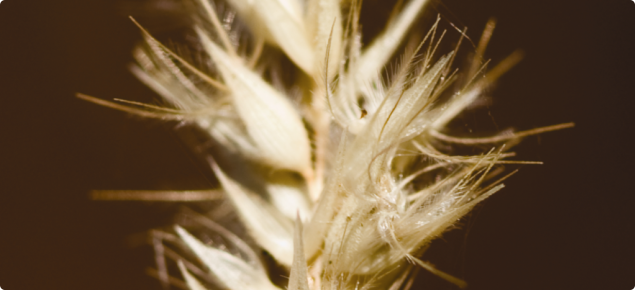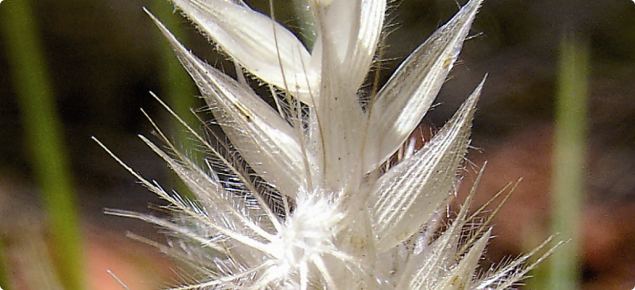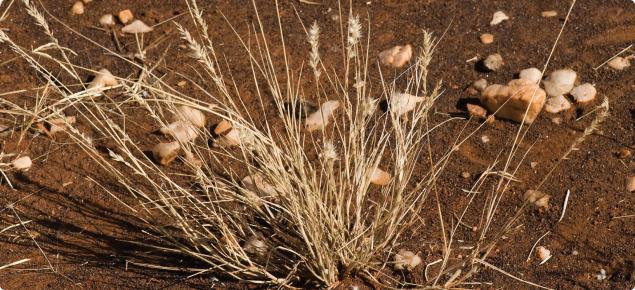Indicator value
Where dominant in arid short grass pastures, limestone grass is an indicator of good pasture condition. Limestone grass is considered to be a desirable species in arid short grass pastures; in other pastures, it is an intermediate species because it is short-lived. Purple nineawn (Enneapogon purpurascens) is a very close relative of limestone grass and has a similar value as an indicator.
Forage value
Limestone grass is palatable to livestock when green but dries off quickly.
Habitat
Red soils, loams and gravelly soils, but is more common on lighter soils.
General description
Limestone grass can be a small, loosely tufted annual, and short-lived perennial grass that can grow 15–35cm tall. The many stems are branched with bearded joints (nodes). The seed heads are tinged purple, narrow and spikelike and are 5–7cm long.



